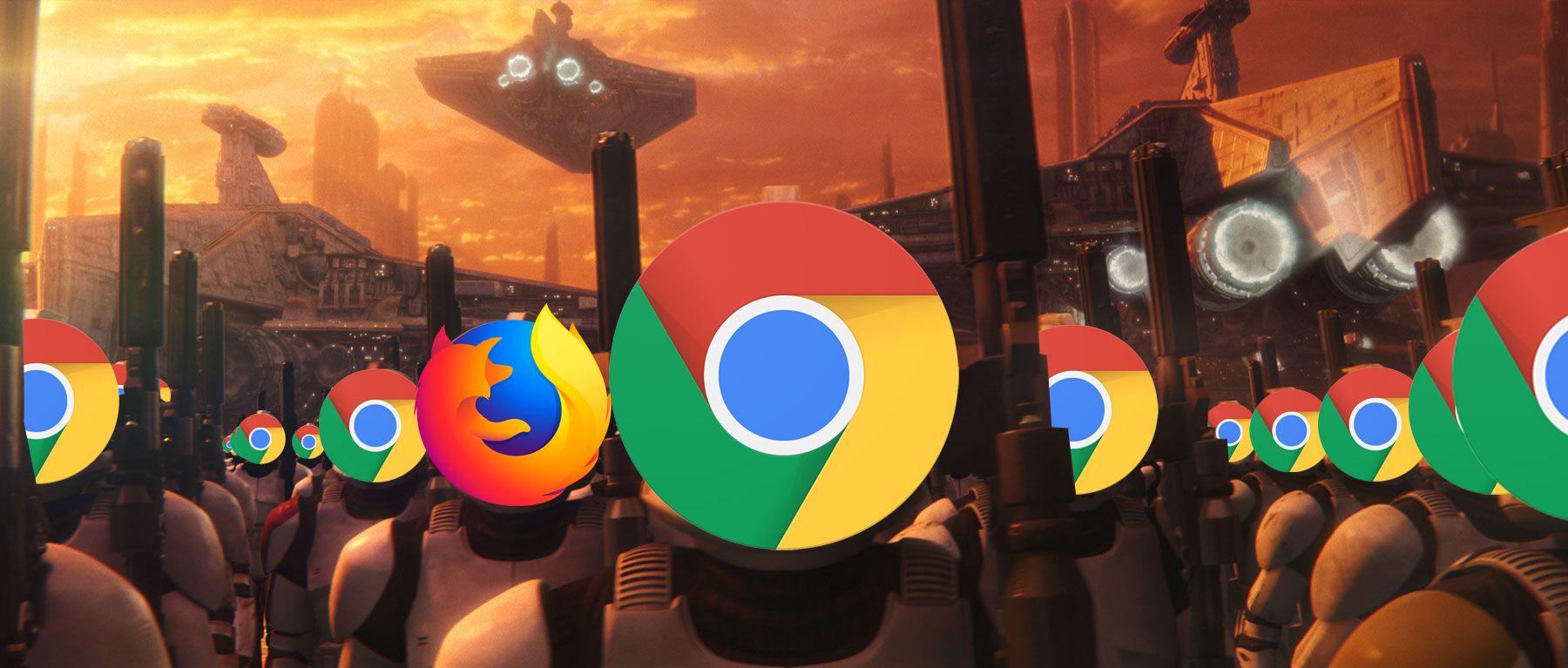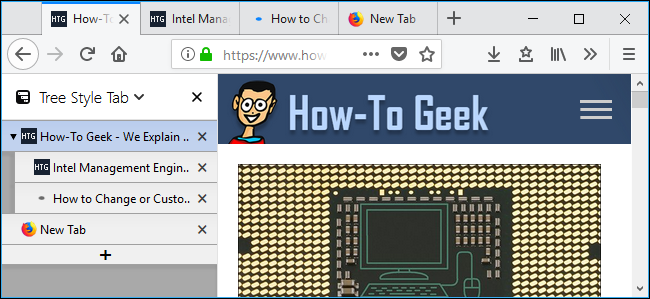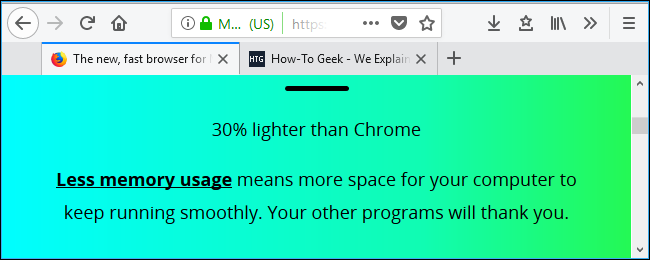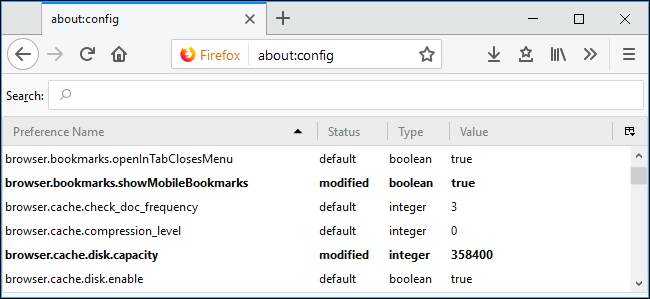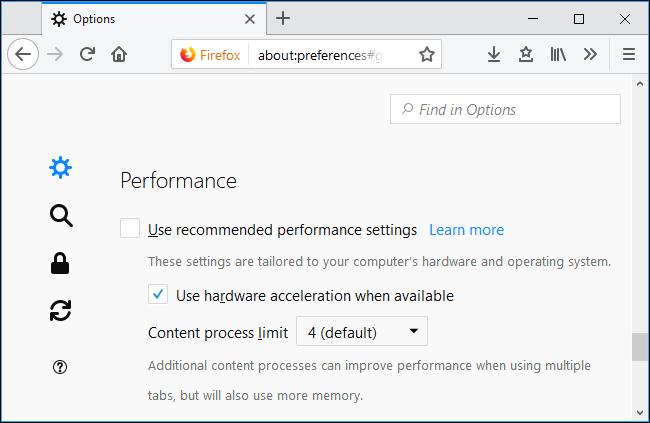Quick Links
"If Firefox is just a copy of Chrome now, why should I use it?" That question is being asked all across the web, but its premise is wrong. Firefox Quantum isn't just a Chrome clone---it's Firefox, modernized.
Sure, Firefox has become more like Chrome in a few ways, but it's still more powerful and customizable than Chrome is---which are integral to Firefox's DNA.
Firefox's Extensions Are Still More Powerful Than Chrome's
Let's start with the elephant in the room: Add-ons. Firefox fully disables the old XUL extensions that Firefox users loved, and now only supports WebExtensions, which Mozilla began implementing two years ago. Firefox had to kill off those old extensions that either didn't or couldn't make the leap to the new extension architecture.
Compared to classic Firefox extensions, WebExtensions are more limited in what they can do. Those legacy extensions had full access to the browser and would frequently break when Mozilla updated Firefox. They could touch low-level browser features, which was great...until it wasn't, and they caused problems. Modern WebExtensions are more similar to Google Chrome and Microsoft Edge extensions, and can access only a specific list of features Firefox allows in a more standard way. As a result, add-ons should break far less often.
While this is a rough transition if you rely on old extensions that no longer function, it's necessary to make Firefox a more modern browser.
But Mozilla didn't just copy and paste Chrome's extension system into Firefox. Firefox add-ons are still more powerful than Chrome's are. For example, Firefox offers a sidebar that extensions can take advantage of, allowing power-user extensions like Tree Style Tab (an advanced vertical tab bar) to function. An extension like this one just isn't possible on Chrome.
Firefox has a good opportunity to beat Chrome here, too. Mozilla could keep adding features for add-ons to take advantage of, giving Firefox a more advanced extension ecosystem than Chrome's. Mozilla is already adding more APIs for WebExtensions to take use in Firefox 58, the next release of Firefox. Hopefully they keep it up.
Other former extensions are, in some ways, being incorporated into Firefox itself. For example, the popular FireBug development tool has been discontinued, but it's replaced by advanced web developer tools integrated into Firefox.
Firefox's Interface Is Still Extremely Customizable
What else makes Firefox Firefox? Customizability is at the top of our list. Chrome's interface doesn't have a lot of room for configuration. You can control whether the home button appears on the toolbar, but that's about it. Extension icons are limited to the right corner of the browser toolbar.
Firefox Quantum, like the versions of Firefox before it, still has a very customizable interface---both through easy graphical customization and deep, hidden options for advanced users. You can right-click the toolbar and select "Customize" to add or remove whatever icons or interface features you like. For example, if you don't like Firefox Quantum's Chrome-style single location bar, you can add a separate search box from here. Chrome provides no way to do that.
Even better, Firefox Quantum's interface is still deeply customizable through the userChrome.css file. This file can modify the browser's interface in just about any way you can imagine. Want to hide menu items from Firefox's context menu, or move the tab bar below the main toolbar? You can do that. There's also the userContent.css file, which allows you to modify the content of browser pages like the New Tab page.
For example, the author of the Classic Theme Restorer add-on for Firefox now makes a list of "classic" tweaks you could enable in Firefox Quantum by adding them to userChrome.css. The Classic Theme Restorer add-on may no longer be functional, but there's still a way to customize Firefox's interface to your liking. Again, nothing like this is possible in Chrome.
Firefox offers an optional sidebar that can show your bookmarks, history, or open tabs from other devices, too. That's a great feature that can better take advantage of modern widescreen displays, and Chrome just doesn't offer it. Chrome doesn't even provide a way for add-on developers to add this feature.
About:config Is Still Around for Powerful Tweaking
Is that not enough customization for you? Well, the classic about:config interface in Firefox is still around, too. It provides deep access to a lot of configuration options that just aren't available in Chrome or other browsers. Many features you might not expect are buried in here, like the ability to restore Firefox's old New Tab page, disable Pocket integration, or tweak text rendering settings and other low-level browser options.
You can even toggle the
media.autoplay.enabled
option in about:config to stop HTML5 videos from automatically playing on web pages. Chrome doesn't allow you to do this without an extension, and that just doesn't work as well as the integrated option in Firefox.
This advanced configuration interface allows Firefox to provide a lot of options that just aren't available in Chrome. It's one of Firefox's most powerful features, and it's still here.
Firefox's Multi-Process Improves on Chrome's (If You Want It)
Firefox Quantum turns Firefox into a modern, speedy browser (finally). Firefox Quantum uses multiple processes like Chrome, but Mozilla actually one-upped Chrome here. While Chrome takes advantage of multiple cores by running different web pages in different processes and assigning them each to a separate CPU, Firefox's Quantum CSS parallelizes Cascading Style Sheet (CSS) work across all the cores in your computer at once.
Chrome can't do that, and Firefox plans to gradually add more features from the experimental Servo browser and Rust programming language that will make Firefox do even more work in parallel for faster performance. Firefox's architecture looks like it will take better advantage of multi-core CPUs than Chrome in the future, too. Mozilla is trying to leapfrog Chrome here, and the first release of Firefox Quantum is just the beginning of those efforts. Sometime in 2018, Firefox will enable WebRender to take much better advantage of your system's graphics processor to speed up your web browsing.
Firefox users who preferred Firefox's smaller number of processes and more minimal memory usage, though, can still be happy. Unlike Chrome, Firefox uses a limited number of content processes---by default, four. Mozilla says this allows Firefox to achieve 30% less memory usage than Chrome.
And, if you don't like this, you can head to Firefox's options page and customize the exact number of processes Firefox will use---even setting it to one content process. The browser interface will still run in its own process to stay speedy, but Firefox will use a single process to render web pages.
Chrome doesn't let you control this at all. If you preferred Firefox for lower memory usage and fewer processes, Firefox Quantum is still good to you. (If you have the memory, though, it's good to use it! Unused memory doesn't do you any good.)
If an add-on you depend on no longer functions, that sucks. And we feel for you. But that doesn't mean Firefox Quantum has just become a Chrome clone. Firefox still offers many advanced features Chrome doesn't, and probably never will. Better yet, it offers that power while finally competing with Chrome on speed. It's already looking faster than Chrome on some tests, and it may even pull decisively ahead of Chrome in future releases. That sounds like a win-win.

